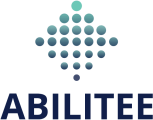Summer is here, we had a wonderful weekend taking our kids canoeing along the Thames (Near Marlow). Canoeing is fun but also hard work, especially when you row the inflatable canoe with kids who are not always rowing in the right direction. Doing those repetitive rowing movements can cause overuse injuries.
Many patients complain of arm pain and restricted movement of the shoulder after participating in activities such as paddle boarding, kayaking, etc. The origin often is the Rotator cuff.
When I treat those patients, beyond instruction of stretching and strengthening exercises to stabilise the shoulders for proper dynamic movement patterns, I also address the pain with Dry Needling.
With Dry Needling, we can needle the active MTrPs
Which are:
Trigger points where the pain persists regardless of touch, is felt at rest, can spread to adjacent areas, and activate trigger points in other areas.
These can be treated and become Latent MTrPs.
latent MTrPs are:
Very common. We all have them even, for years sometimes, without even noticing them.
Those ate noticeable only when pressed or provoked.
It can potentially be aggravated and develop to become active MTrPs.
It can restrict movement or cause muscle weakness.
Cesar et al in 2108 conducted a randomized clinical evaluation of 2 groups aged 66 years and over. One session of dry needling on a latent and an active MTrPs in the infraspinatus in conjunction with dry needling on an active MTrP also in the infraspinatus muscle.
They found out that the needling the active and latent MTrP help to reduce pain intensity and irritability of the satellite MTrPs located in the referred pain area in the short term.
©2023. Abilitee All Rights Reserved. Dry Needling Course | Temporomandibular (TMD) Course


